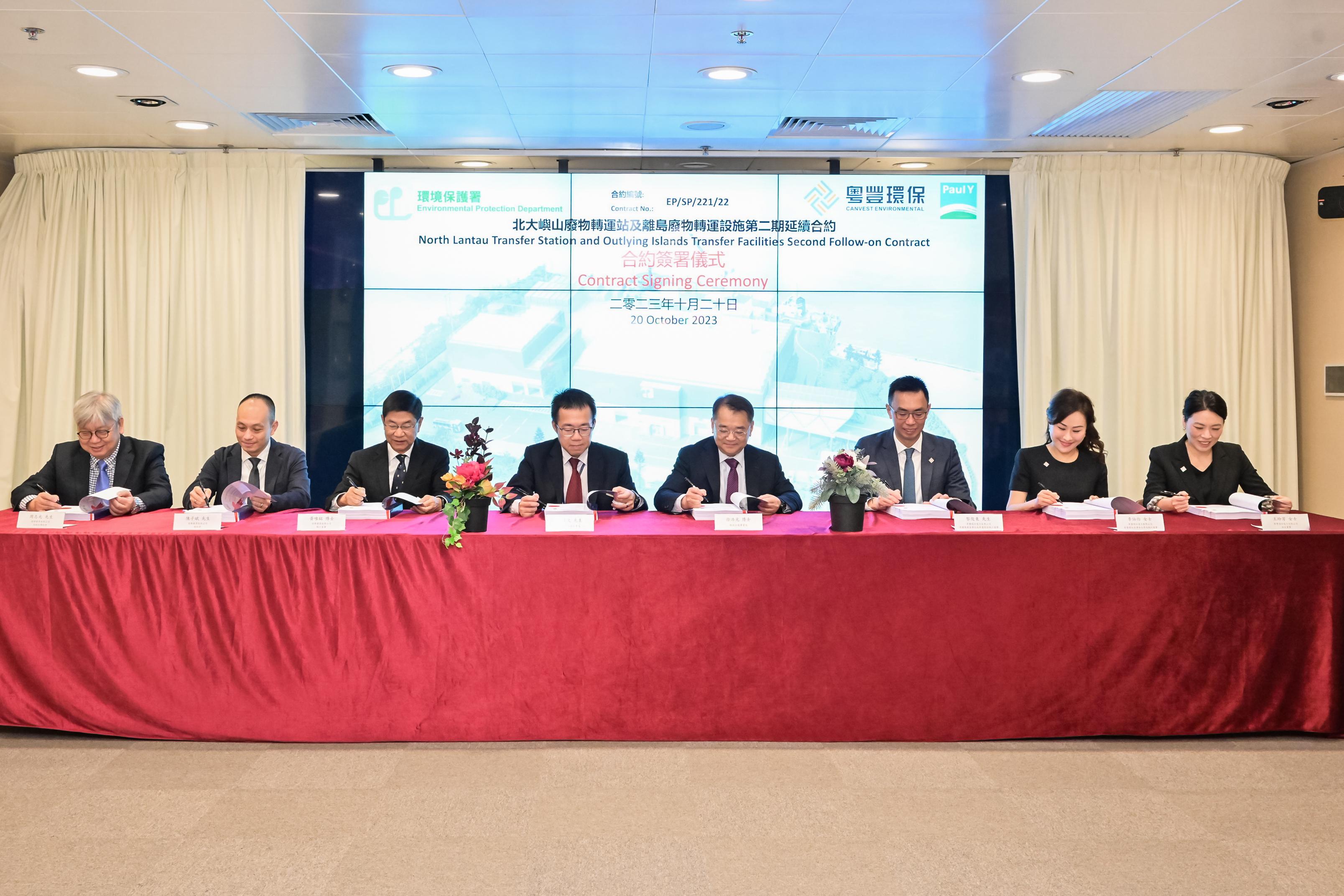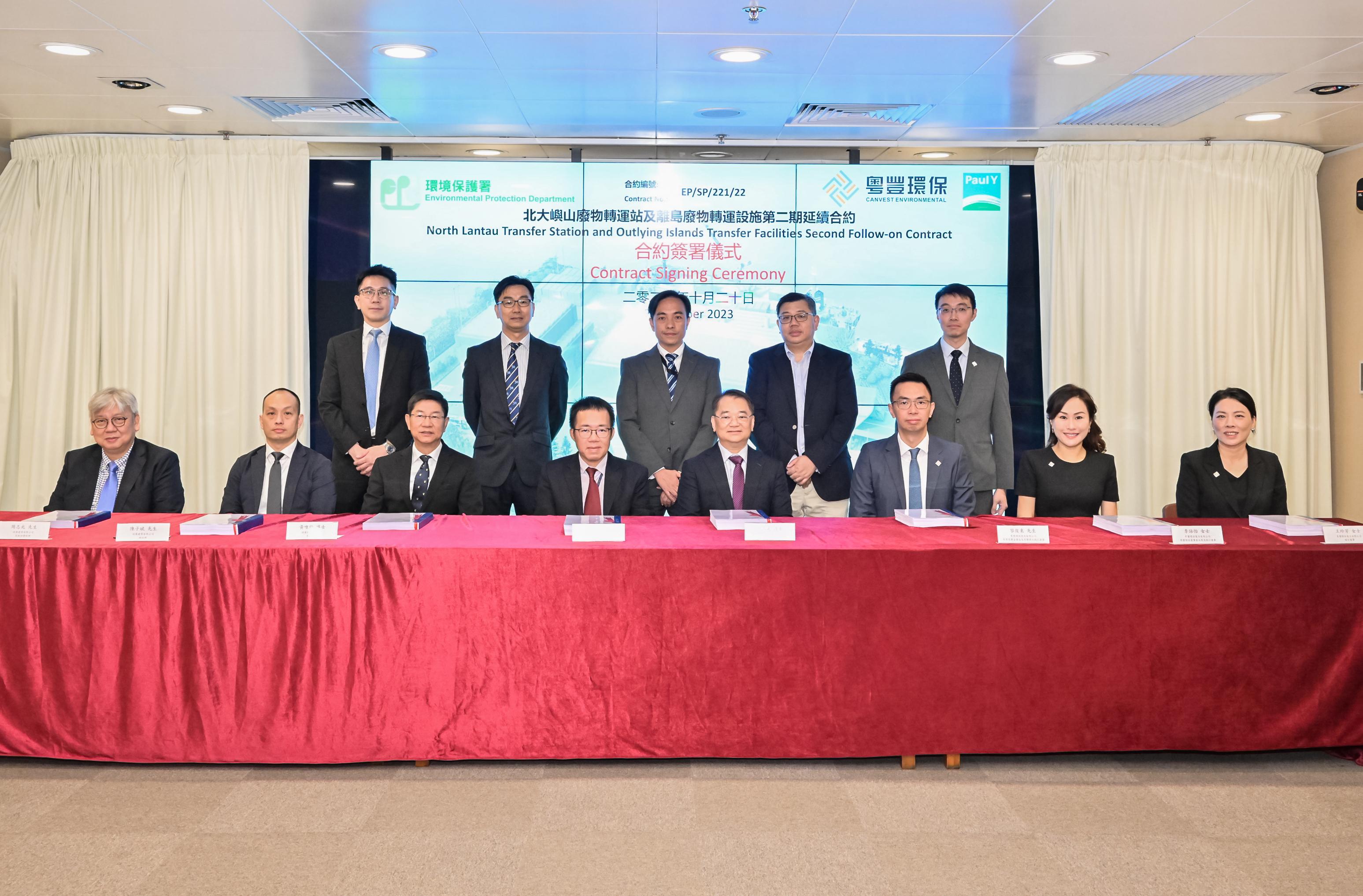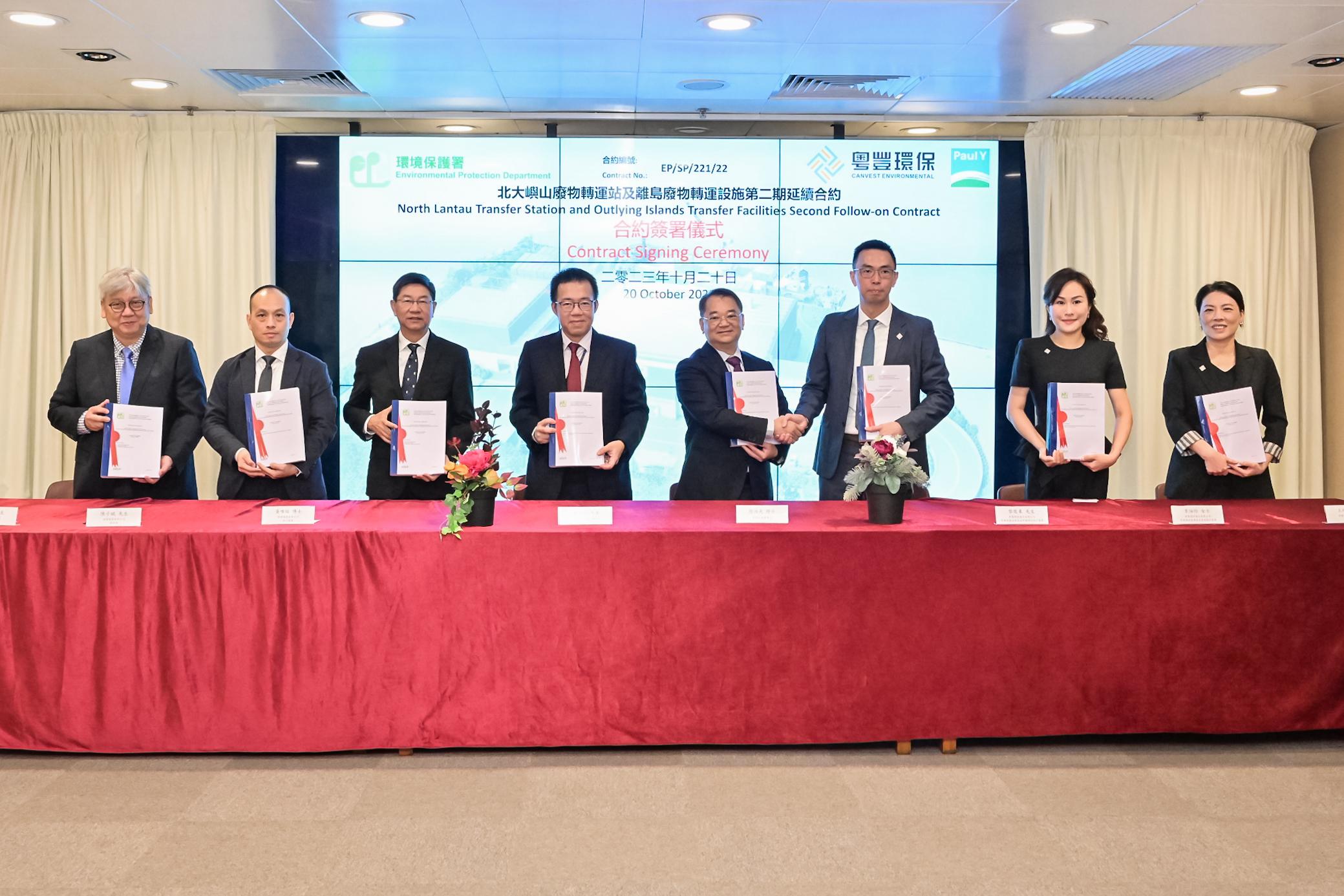EPD signs follow-on contract for refuse transfer stations (with photos)
The Environmental Protection Department (EPD) today (October 20) signed the North Lantau Transfer Station and Outlying Islands Transfer Facilities Second Follow-On Contract with Canvest – Paul Y. Joint Venture.
"The joint venture has a multidisciplinary professional team required for the refuse transfer project and possesses rich experience in infrastructure construction. We expect that this co-operation could bring new technologies to the management and operation of the transfer station and transfer facilities, and provide a safe and reliable waste transfer service in Hong Kong," the Director of Environmental Protection, Dr Samuel Chui, said at the contract signing ceremony.
Canvest – Paul Y. Joint Venture consists of two companies, namely Canvest Environmental Protection Group Company Limited, which is a non-state owned waste management company and is also participating in cleaning and waste collection services in Hong Kong; while the other joint venture participant is Paul Y. Construction Company, Limited.
Upon completion of the refurbishment and upgrading works, the above transfer station and transfer facilities will have their waste handling efficiency comprehensively enhanced and environmental performance further improved, including an upgraded odour control system, better vehicle washing facilities, provision of vertical green walls improving the environment and so on. To join the global efforts in combating climate change, the EPD has stipulated in the tender documents that the contractor has to adopt waste container vessels with enhanced energy efficiency and full electric propulsion.
The New Engineering Contract (NEC) form has been adopted in the design, build and operate of the North Lantau Transfer Station and Outlying Islands Transfer Facilities Second Follow-On Contract. The NEC form embraces a collaborative culture and, through contractual mechanisms, fosters the development of a mutual assistance and trust partnering relationship between the contracting parties. It also facilitates joint risk management, thereby enhancing project management performance and cost-effectiveness.


